
Trolling for Tuna Tips and Techniques
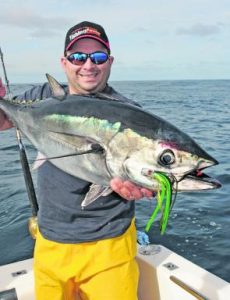
Discover everything you need to know about trolling for tuna. Learn the best gear, techniques, lures, and tips to catch more tuna. Perfect for beginners and seasoned anglers alike.
Trolling is a method of fishing where one or more fishing lines, baited with lures or bait fish are drawn through the water behind a moving boat. Trolling combines strategy, skill, and patience, but is one of the most thrilling ways to fish for tuna. This guide will walk you through the essentials, from selecting the best equipment to mastering trolling techniques that work.
Trolling How To
Trolling involves pulling lures or baited lines behind a moving boat at various depths and distances. This technique helps anglers cover large areas of ocean, increasing the chances of encountering schools of tuna. Tuna are fast, agile, and constantly on the move, which makes trolling ideal. Trolling lets you mimic the natural speed and movement of baitfish that tuna love to chase. By presenting multiple lures at once trolling can also mimic a small school of fish, drawing tuna in from greater distances and prompting strikes.
Trolling Advantages Over Other Fishing Methods
Trolling offers several advantages over other fishing methods, making it a top choice for targeting tuna.
- Covering Greater Distance Tuna are highly migratory and often found in open waters far from shore. By trolling you can cover vast areas quickly in which improves your chances of finding active schools. Other methods like chumming or live baiting,, you are usually stationary which may limiting your reach.
- Covering Various Depths Tuna can be at different depths depending on factors like water temperature, time of day, and feeding habits. Trolling allows you to present lures at various depths simultaneously, making it easier to reach tuna.
- Attracting Tuna with Movement Tuna are visual predators, drawn to fast erratic movements. Trolling creates a lifelike action in your lures mimicking the behavior of struggling or fleeing baitfish. By varying your trolling speed and patterns, you can create an enticing presentation that is difficult for tuna to resist.
Trolling for Tuna Essential Gear
Tuna Fishing Rod and Reel
When it comes to gear for tuna trolling your rod and reel are like Batman and Robin….one’s gotta back up the other. You will want a rod that’s about 5.5 to 7 feet long. Too short and you won’t get the power you need, too long and you are just making life harder for yourself. Tuna fishing rods have to be heavy duty with enough backbone to handle a 100 pounder, but still flexible enough to let you feel the fight. Pair it up with a saltwater reel thats got some serious line capacity. Tuna are known for their endless runs, so make sure your reel is smooth and won’t burn up on you halfway through the battle. Look for a reel with at least a two-speed setting. Trust me, your arms will thank you!
Fishing Line for Catching Tuna
Tuna trolling ain’t the place for bargain bin spools of line. You need to look at 50 to 80 lb test as a good starting point, maybe even heavier if you are chasing bigger fish like bluefin. Most folks go with braided line because it’s strong without taking up as much space on the spool. Braided line also gives you that all important sensitivity. You will feel every wiggle, bite, and run. Just keep in mind that tuna have great eyes, so consider using a fluorocarbon leader at the end to keep things stealthy.
Trolling Lures for Tuna
Alright, let’s talk lures. Tuna love their fast food so you want something that looks like a quick snack but doesn’t give them too much time to think. Feather jigs are a classic, bright colors and flashy, they are like the disco ball of lures and tuna can’t resist them. Then you have got cedar plugs. They don’t look like much but they mimic injured baitfish .. easy prey. Soft plastics are also a great option, they have got that realistic swim action that works wonders, especially on slower days. Most tuna lures have a Kona head, but they come in many shapes, sizes, colors and are sold under many names. The Kona head creates an ideal bubble trail and surface action for attracting tuna.
Generally the larger the lure, the larger the fish you will catch, but of course there are always exceptions to the rules. You never know what size and type of fish will hit your next lure. For smaller tuna species such as Albacore and Striped Tuna, 6 inch lures of any type in green/yellow, blue/silver and red/white I have found to be most successful. The next step up would include 8-10 inch lures aimed at catching Bluefin, Yellowfin and Albacore Tuna.
Mix things up, toss a few types in the water and let the tuna decide what’s on the menu.
Fishing Spreader Bars
Spreader bars are like the tuna buffet you are laying out behind the boat. They let you mimic a small school of baitfish, making it look like a feeding frenzy from below. Picture a main line with a whole string of teaser baits rigged on it, all splashing around in the water to grab the tuna’s attention. At the end of the spreader bar you have got the real bait or lure which looks like the one fish that didn’t quite keep up with the school. And tuna? They love a straggler 🙂
You can rig your spreader bars with all kinds of teasers from squids, little soft plastics, even flashy feathers if you are feeling fancy. Pro tip – Don’t go too big on the teasers as you don’t want the tuna chomping down on the teaser instead of your bait. And keep a few extra spreader bars on deck, just in case your rig turns into a tangled mess.
Trolling Spreader Bars for Tuna is another page we have. Please view full page here.
Leaders and rigging is the part of your setup that can make or break your whole trip. As mentioned, tuna have good eyes and won’t hesitate to ditch anything that looks off. Go with a fluorocarbon leader this is around 10 feet long, this will make your setup invisible in the water. And remember that your knots and crimps need to be top notch. Nothing is worse than watching a trophy tuna swim off because of a sloppy knot.
Trolling Techniques for Tuna Fishing
Typically, anglers prefer to troll using a “W Pattern”. This simple pattern consists of 2 long lines attached to each outrigger, 2 lines held relatively flat and out to the side and one line that goes straight down the middle just below the surface. The goal is to present a bold presentation of varying lures. Try and create the illusion of panic stricken schools of bait fish. Best color lures for tuna? Green lures are particularly alluring to yellow fin tuna for some reason.
Trolling Spread for Tuna
A good trolling spread for tuna is all about variety. Mix up the distances, depths, and lure types behind the boat to create a lifelike school of baitfish. You want a few lures running close, some staggered further back, and maybe a deep diver or two for any tuna lurking below. Some of the named configurations are below.
- Basic Staggered Spread is simple but effective. Set one lure close to the boat, two at mid distance and one or two further back. The staggered positions help cover more water and give tuna multiple “baitfish” targets.
- V-Pattern Spread Place the closest lures on either side of the boat, with each lure staggered further back in a “V” shape as they trail behind. This spread creates a natural look of a fleeing school of fish and works well in rougher water, giving each lure space to swim effectively.
- Widespread or Outrigger Spread Use outriggers to set lines far out to each side, with lures at various distances behind the boat. This setup creates a wide footprint in the water, covering a larger area and mimicking a broader school of baitfish, perfect for attracting curious tuna from farther out.
- Center and Wing Spread Position a larger flashier lure directly in the center further back and place smaller teasers or feather jigs on each side at mid range. This arrangement mimics a bait ball with a trailing “injured” fish, which tuna can’t resist.
- Zigzag Spread Troll in a zigzag pattern while using a staggered spread. As the boat changes direction, lures on the inside of the turn slow down, while lures on the outside speed up, giving them a more erratic and realistic baitfish movement that often triggers bites.
These spread patterns give you the flexibility to adapt based on water conditions, tuna behavior, and your gear setup.
Trolling Motor Tips
If you are using a trolling motor for tuna remember that steady doesn’t always win the race. Keep your motor quiet and smooth to avoid spooking fish, but be ready to make adjustments. Quick speed changes or small course corrections can make your lures look like nervous baitfish which gets tuna excited. And always check your motor’s battery, no one wants to be dead in the water when the fish start biting.
Best Trolling Speed for Tuna
Try trolling at slow speeds (5-9 knots) using either live bait or artificial lures, such as strip baits, large spoons, skirted lures, and plugs. Don’t worry, the tuna are more than fast enough to keep up with the boat. It pays to experiment. Faster speeds work well with cedar plugs and lures that can handle some drag, while slightly slower speeds (around 4-6 knots) give soft plastics a more lifelike action.
Distance wise, start with some lures around 20 to 30 feet behind the boat and others a bit further maybe up to 100 feet. The variation gives tuna a range of targets and helps figure out where they are hitting that day.
When tuna hit, they hit hard, usually hooking themselves with no help from you, and yanking the line off the reel at a rapid rate. If the line becomes slack, the fish is probably swimming toward the boat, you need to reel in the slack rapidly and make sure the hook is set. Always keep the line tight. A truly large fish might give you the fight of your life, battling for as long as several hours. It may win by snapping the line or leader, or you do by getting it up to the boat.
As with all fish there are no hard and fast rules. If you are not succeeding, change your lure position, and color, or alter your speed until you find the right mix. Undoubtedly you will discover the joys of game fishing.
Trolling Tactics Looking for Birds
When fishing for tuna always be on the lookout for birds. When fish are near the surface they are visible, especially in a feeding frenzy. Spot the tuna schools by looking into the sky and seeing where birds are flocking, they are usually above the schools picking off baitfish. When the water’s surface is breaking with activity, tuna are feeding. Get your boat as close to the school and troll your lines through it.
Tuna tend to travel near pods of dolphins or sharks. If you see either birds, dolphins or sharks try and determine if any bait fish are in the area.
Trolling for Tuna Season and Species Info
Searching for tuna can be an exciting adventure. It can also be extremely frustrating unless you know what you are looking for. In the summer months you will have an easier time finding schools of tuna. Typically, they will stay near the surface of the water while hunting for schools of bait fish. In the winter months, tuna tend to hunt deeper and rarely venture up to the surface. Additionally, tuna fishing is usually better in low light conditions, such as those in the late afternoon or early mornings.
Several species of tuna can be caught while trolling, each offering their own unique challenge and reward.
Trolling for Bluefin Tuna
Bluefin tuna are the giants of the tuna family, reaching sizes of over 1,000 pounds. They are typically found in cooler, deeper waters and are known for their intense strength and endurance. Trolling for bluefin is challenging but incredibly rewarding, as their size and speed make them formidable opponents.
Bluefin are readily caught on pink, brown and purple colour combination’s.
Trolling for Yellowfin Tuna
Known for their bright yellow dorsal and tail fins, yellowfin tuna are prized for their strength and delicious meat. They are highly migratory and often found in warm waters, making them a popular target for offshore trolling.
One popular Yellowfin lure that catches well is the Pakula Lumo Small Spocket. If you are after large Yellowfin Tuna or Striped Marlin in particular, people have reported darker lures in combinations of blue, black and purple, but they tend to go for pink as well.
Check out other species of tuna.
Trolling for tuna is a challenging yet rewarding endeavor. With the right setup, timing, and technique, you are well on your way to landing one of these powerful fish. It is all about preparation and patience. For beginners or seasoned anglers, trolling offers the excitement of the chase and the thrill of a hard fought catch. Now that you know the essentials, grab your gear and head out. Start trolling for tuna!
Stay tuned for more tips and tricks on How To Catch Tuna.
Keywords
- tuna fishing techniques
- best lures for tuna
- trolling for yellowfin tuna
- tuna fishing gear
- trolling speed for tuna
- deep-sea trolling
- tuna hotspots
- offshore fishing for tuna
- tuna fishing seasons
- tuna trolling spread
- chumming techniques for tuna
- trolling rods for tuna
- fluorocarbon leaders for tuna
- tuna lure colors
- trolling patterns
- tuna behavior
- best time for tuna fishing
- tuna migration
- deep-sea reels for tuna
- tuna fishing basics
- tuna gaffing tips
- catching big tuna
- fishing line for tuna
- tuna fishing temperature
 Rigged Trolling Flexi Spreader Bar Topwater
Rigged Trolling Flexi Spreader Bar Topwater 36″ Skipjack Hybrid UV 8″ Blue & Pink Mackerel Baits
36″ Skipjack Hybrid UV 8″ Blue & Pink Mackerel Baits Mini Spreader Bar
Mini Spreader Bar Cedar Plugs Tuna Fishing Lures
Cedar Plugs Tuna Fishing Lures Blue Fly Fish Saltwater Trolling Fishing Lures
Blue Fly Fish Saltwater Trolling Fishing Lures Saltwater Trolling Lure for Tuna
Saltwater Trolling Lure for Tuna

 Penn Tuna Fishing Rod & Reel Combo
Penn Tuna Fishing Rod & Reel Combo Fishing Pliers and Knife Combo
Fishing Pliers and Knife Combo View Best Tuna Fishing Lures
View Best Tuna Fishing Lures
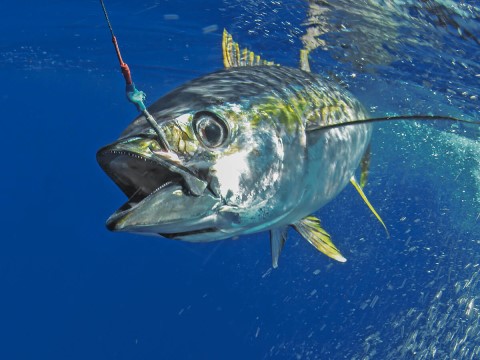
 Stainless Steel Fishing Leaders
Stainless Steel Fishing Leaders Fishing Rod Holder
Fishing Rod Holder Lures Bait Rig Or Hooks
Lures Bait Rig Or Hooks
 Chum Bag
Chum Bag  Fishing Bait Bag
Fishing Bait Bag 3pcs Bait Bag Chum Bucket
3pcs Bait Bag Chum Bucket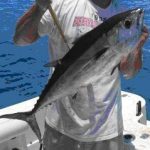

 Braided Fishing Line
Braided Fishing Line
 Super Strong Braided Fishing Line
Super Strong Braided Fishing Line
 Penn Tuna Spinning Fishing Reel
Penn Tuna Spinning Fishing Reel Okuma Trolling Reel
Okuma Trolling Reel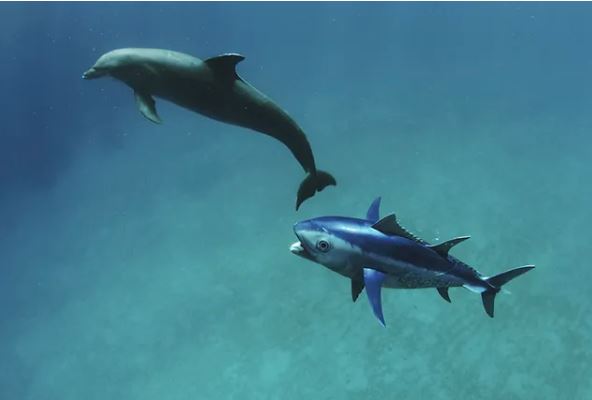

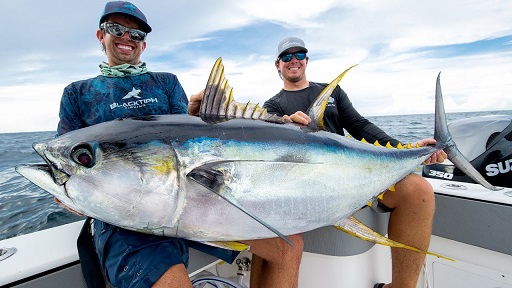
 Shimano Trinidad Reels
Shimano Trinidad Reels Fishing Reels
Fishing Reels